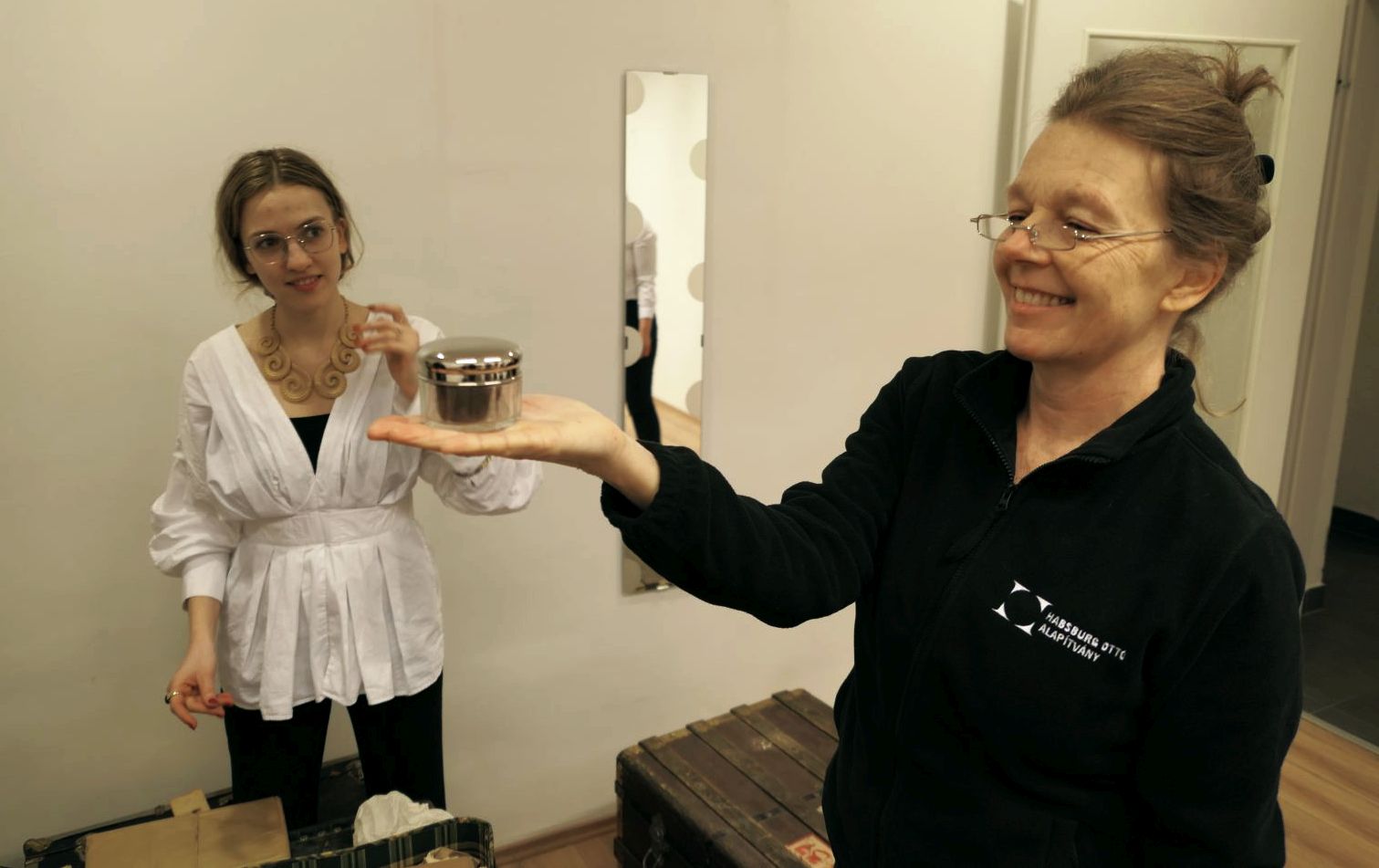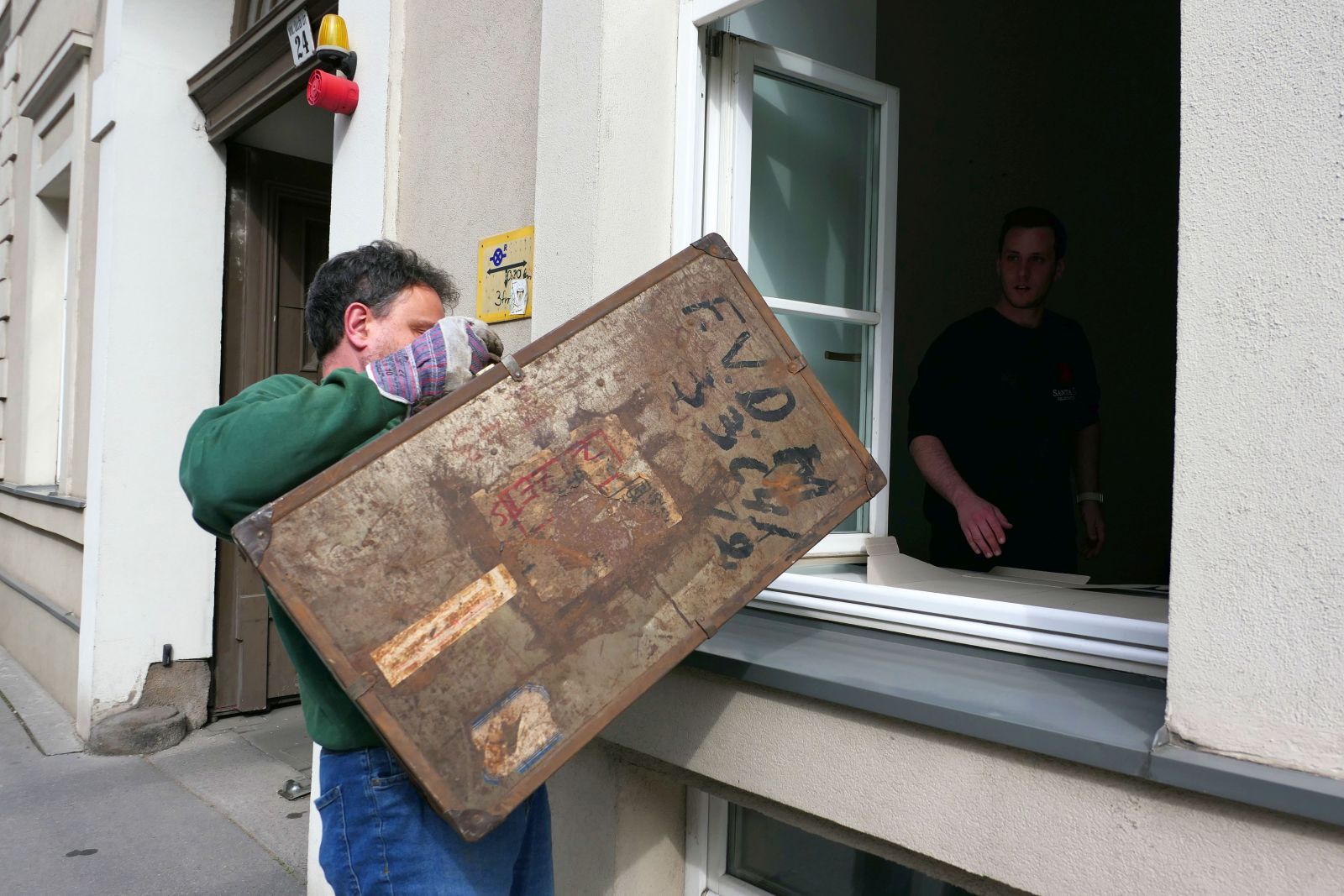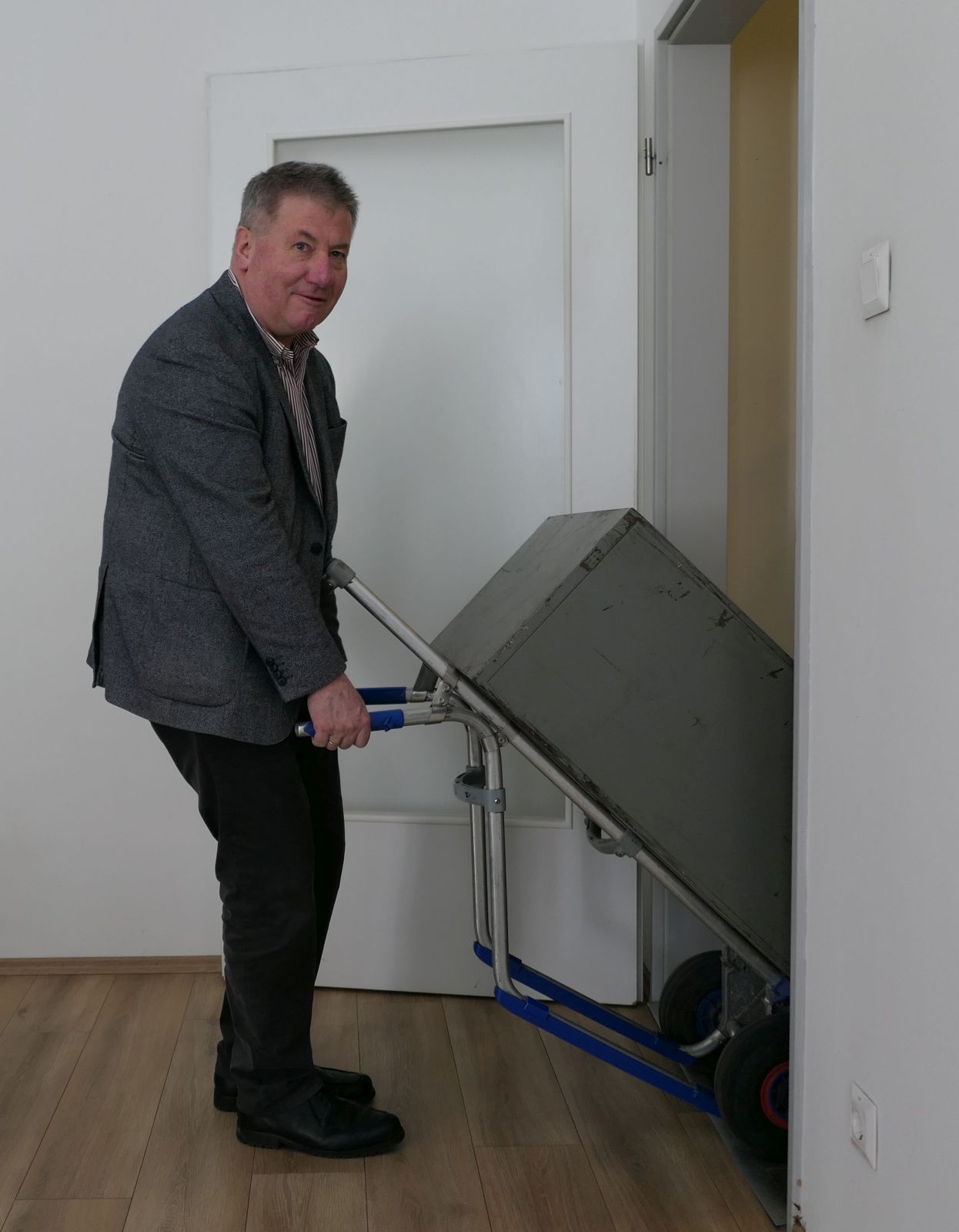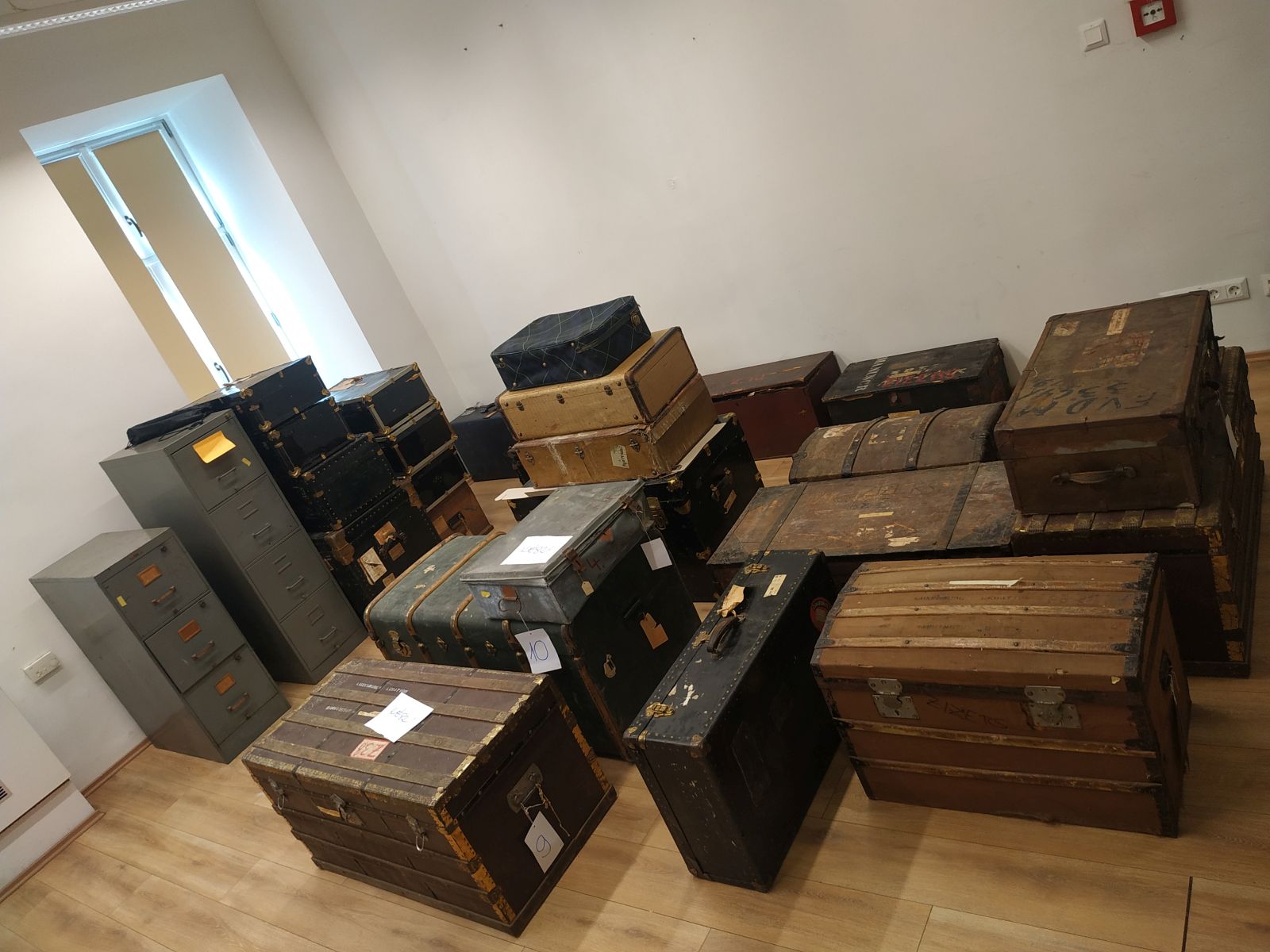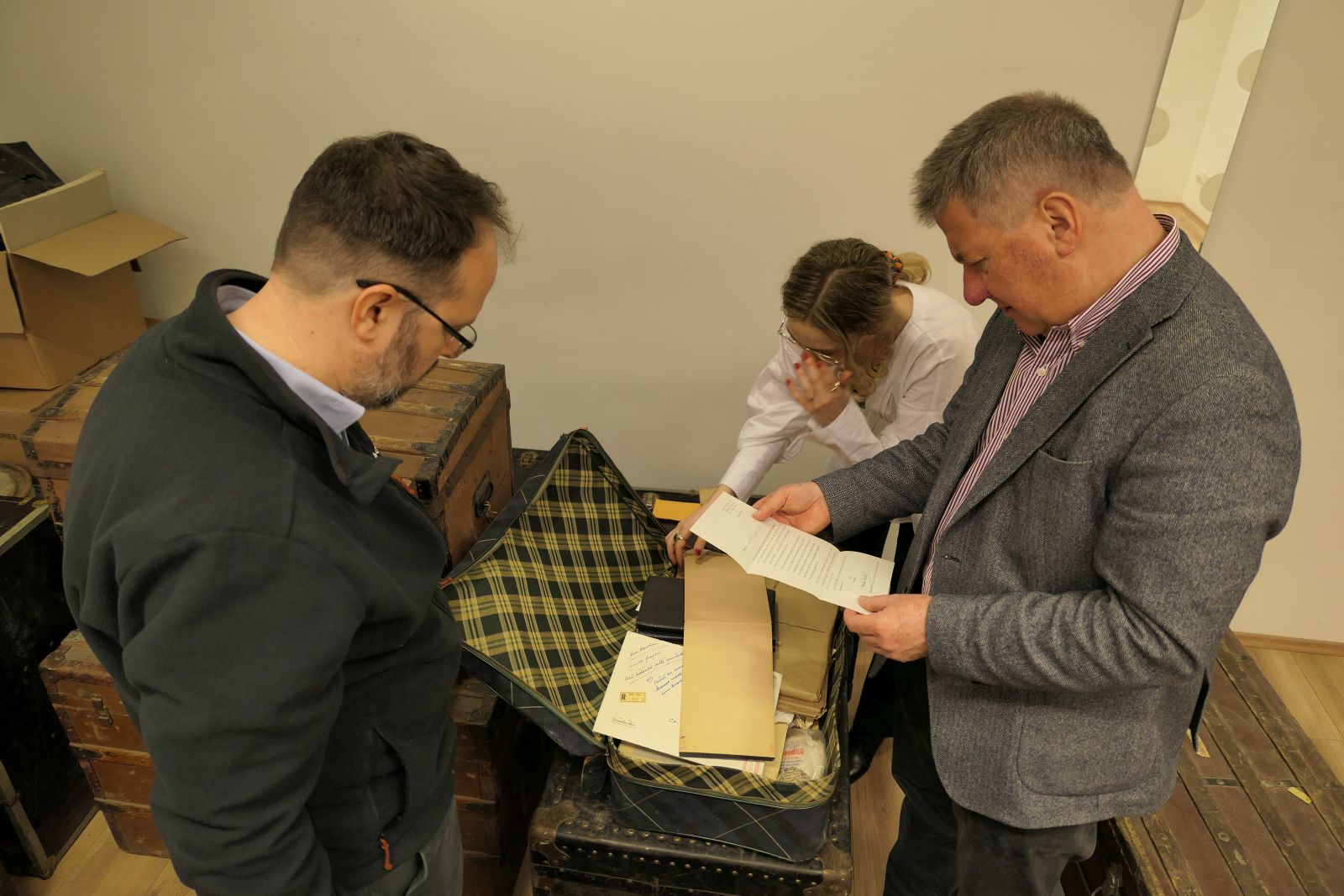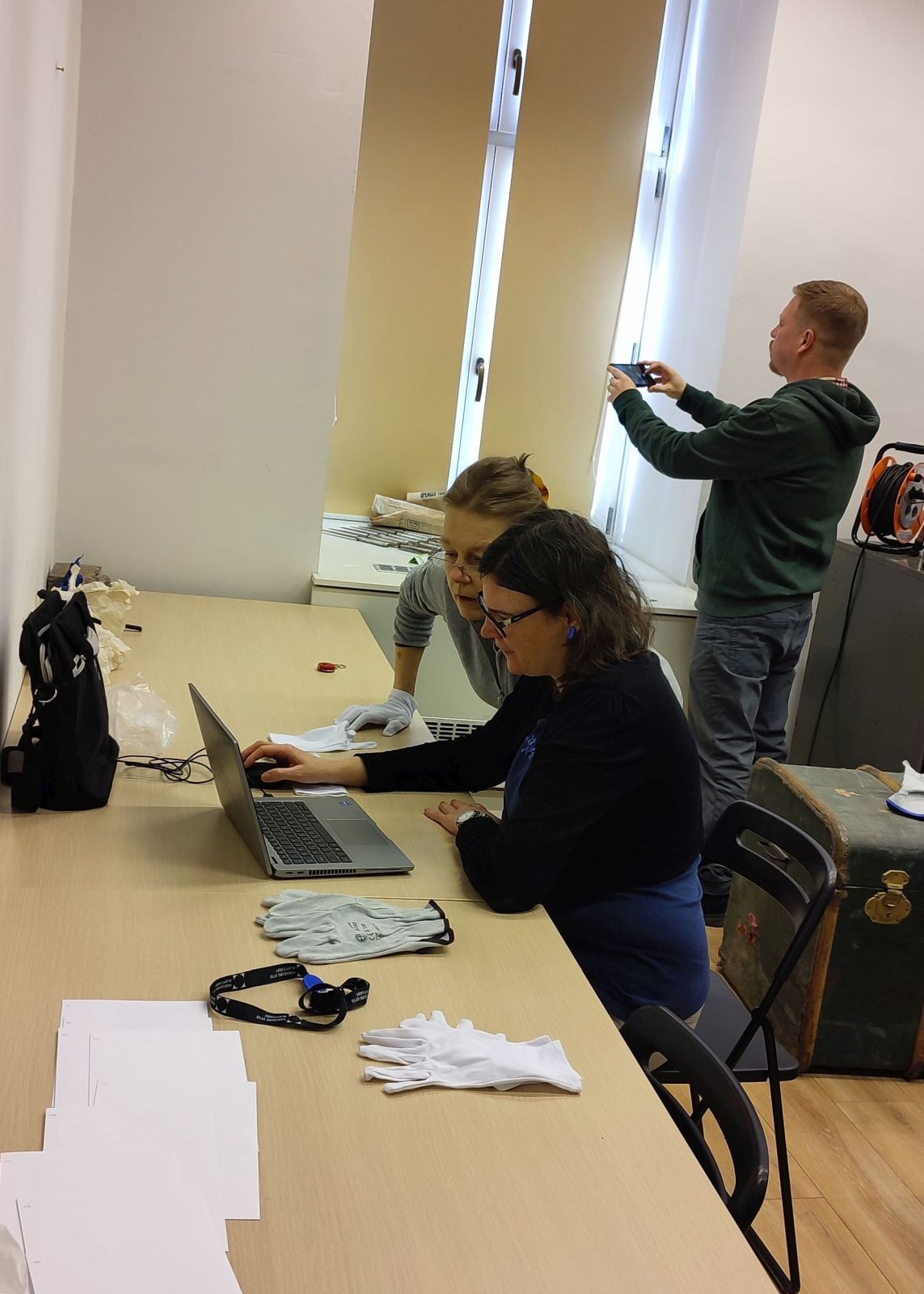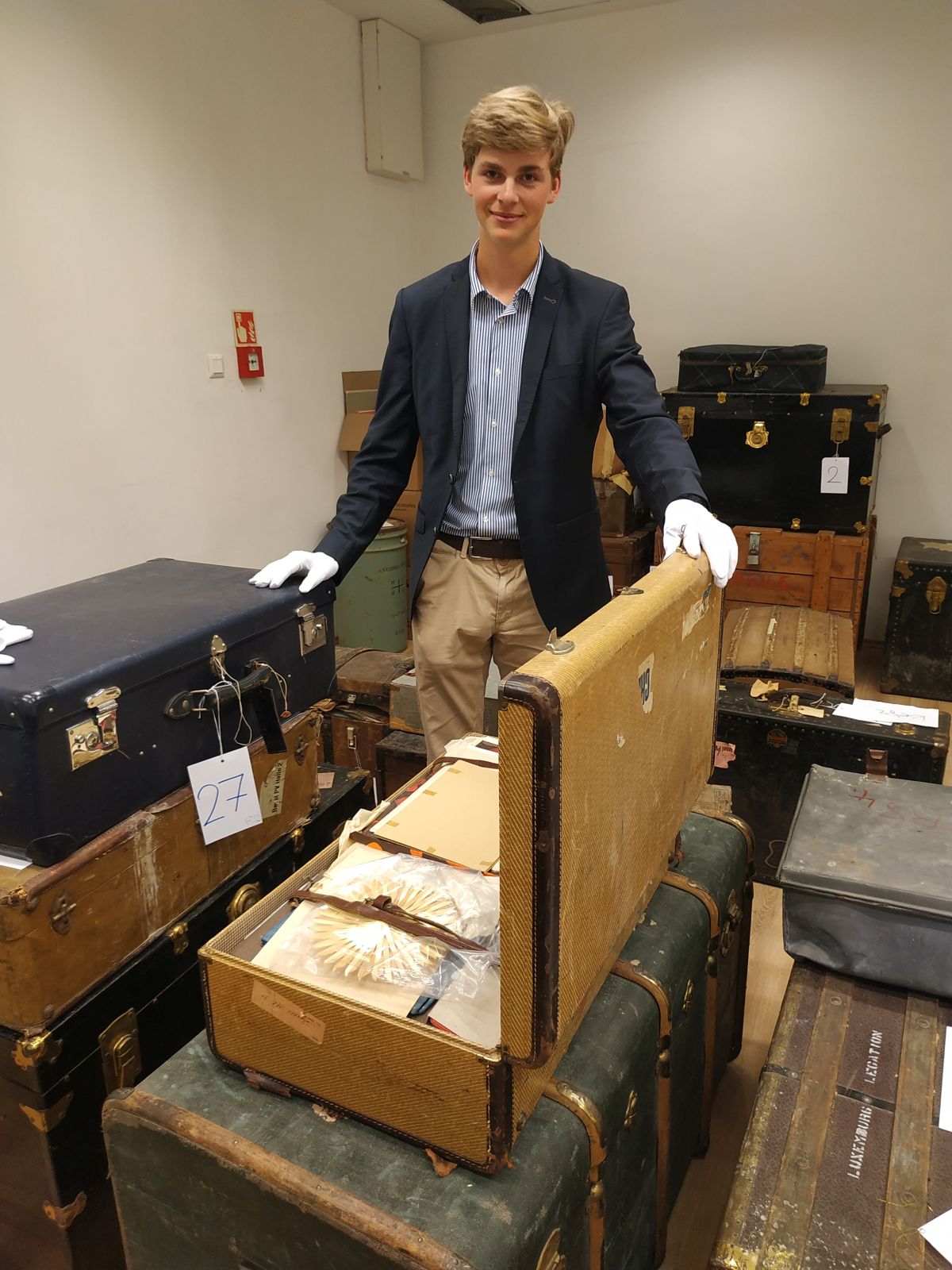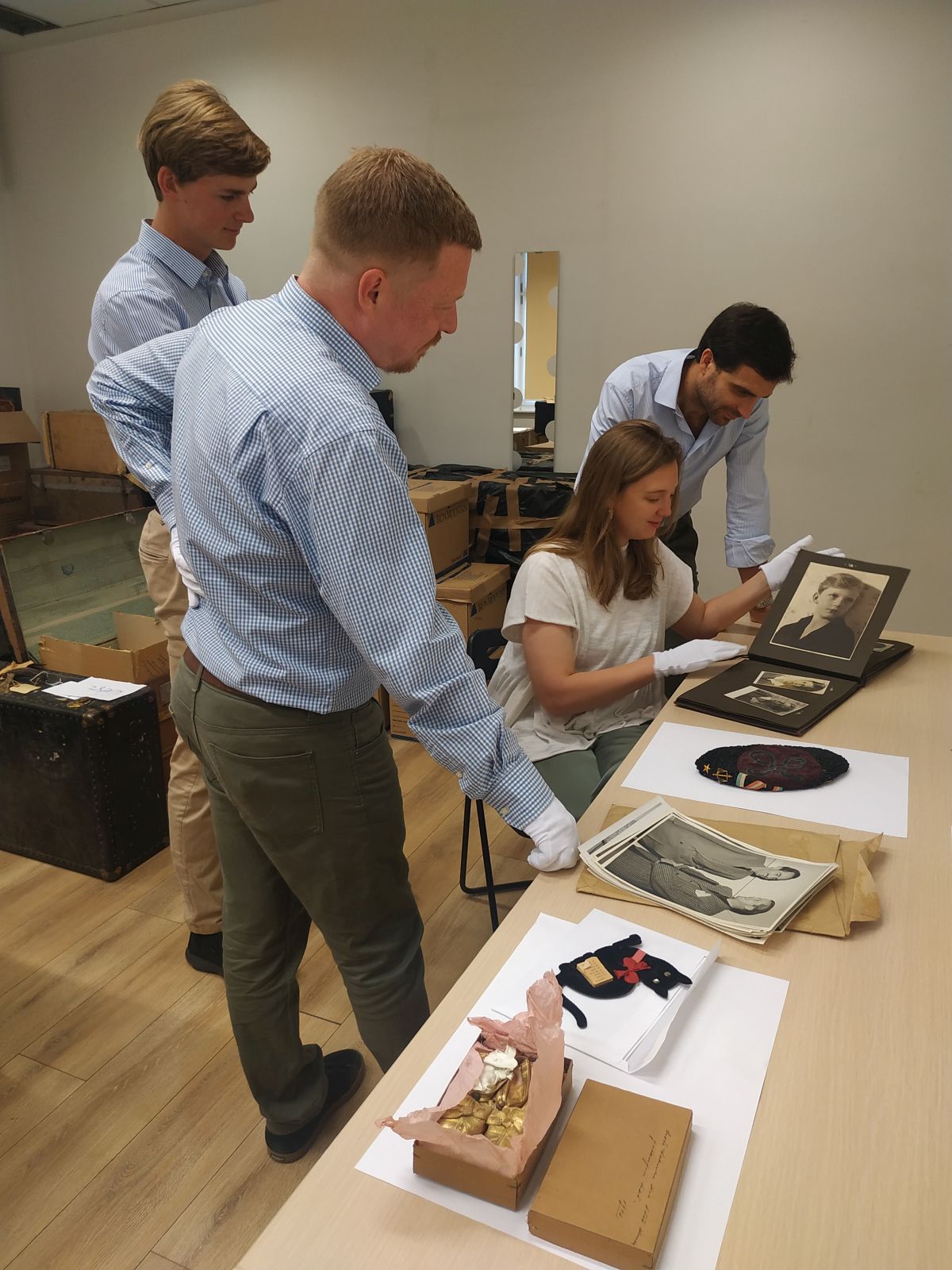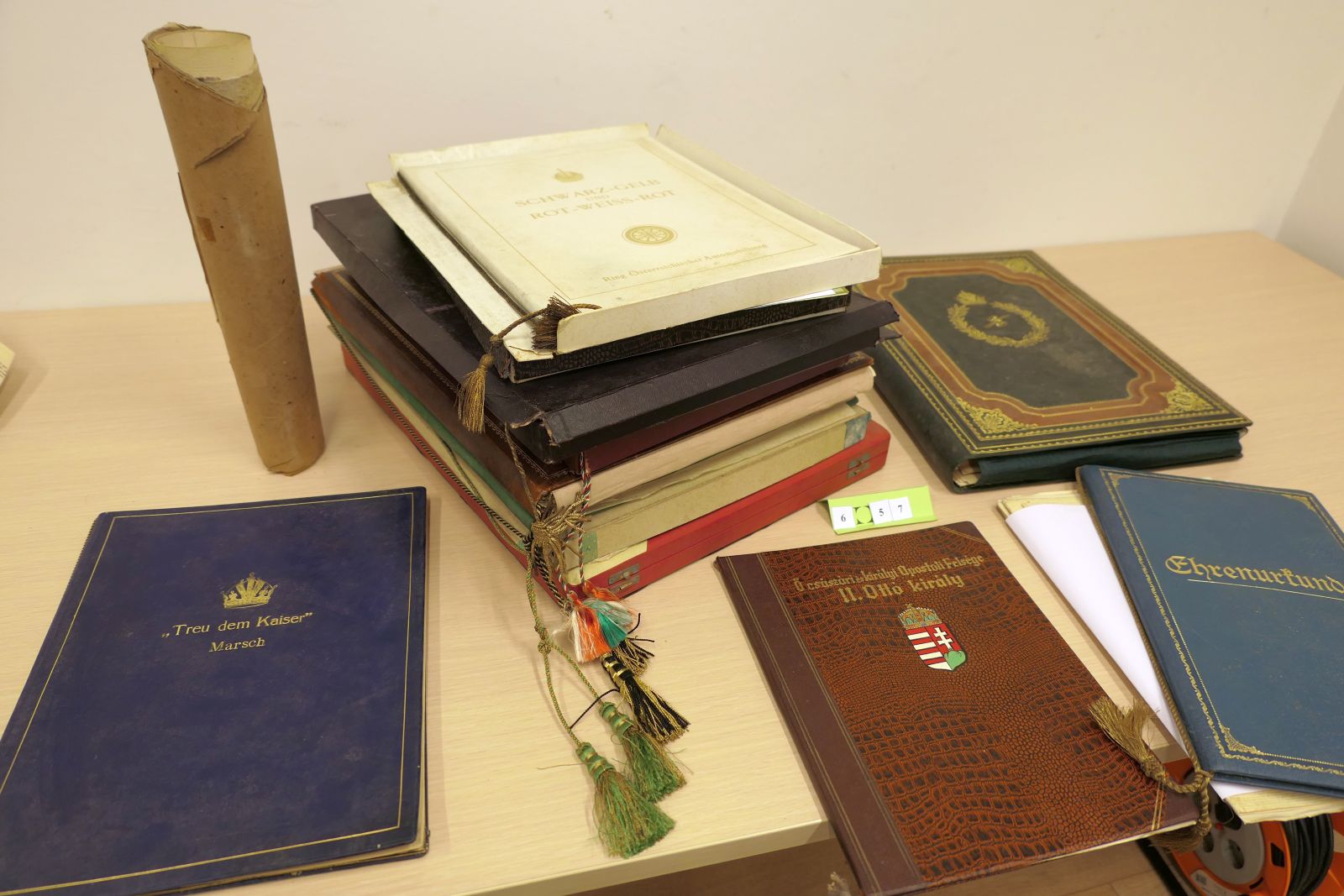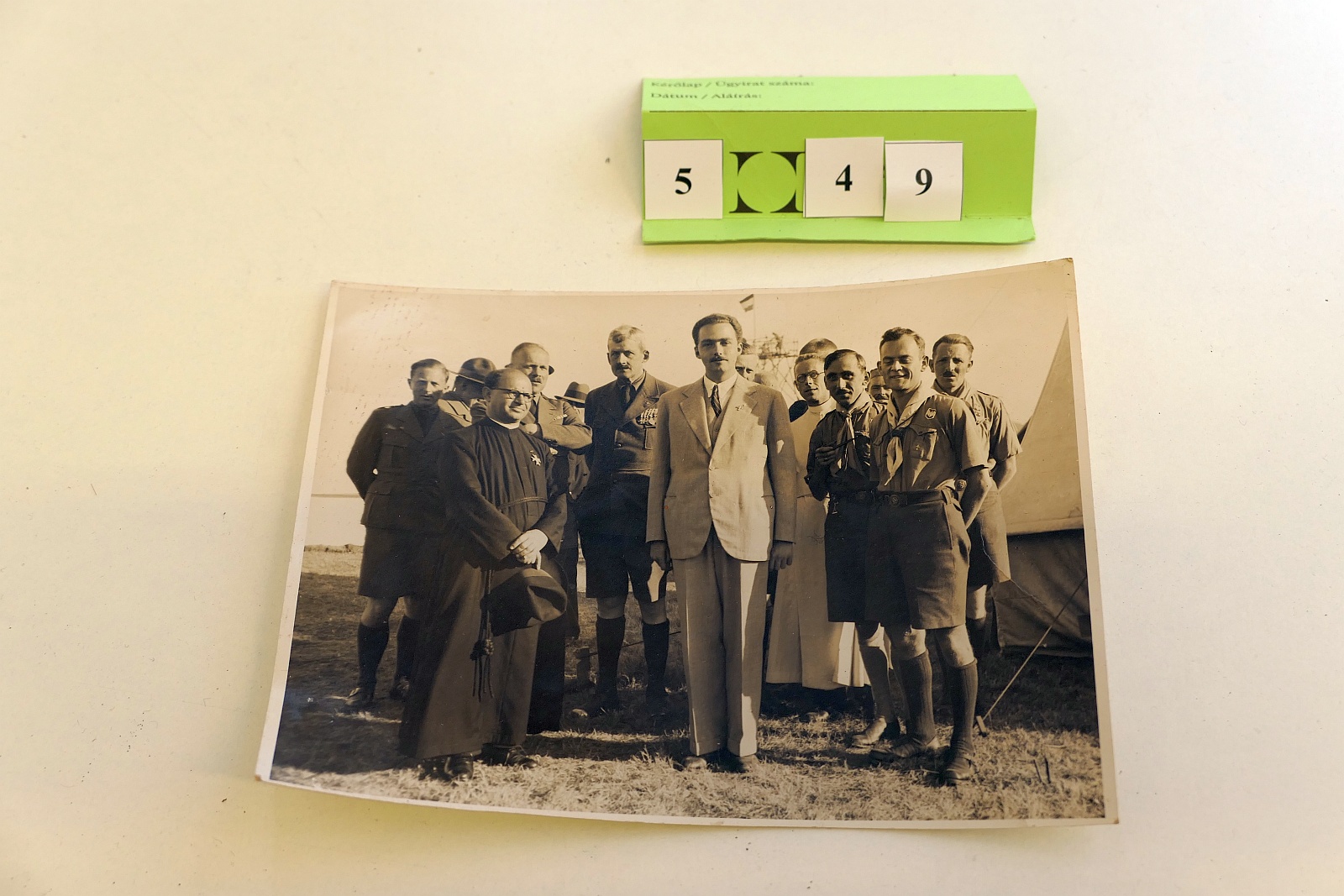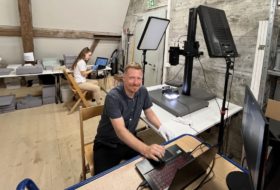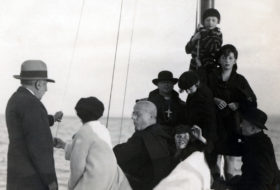With the help of the Embassy of the Swiss Confederation to Hungary, we received the bequest of Count Heinrich von Degenfeld, which contains a considerable body of documents and objects that were either entrusted to his care or donated to him; however, they were presumably once the property of the Habsburg family, and are perfectly complementing the Otto von Habsburg material we hold.
Count Heinrich von Degenfeld-Schonburg (1890–1978) was the family’s most trusted confidant until his death. He was the tutor of the young Otto von Habsburg and later became his colleague. He also served as secretary to the Archduke, enabling the Count to witness the events that transpired around them directly. Count Degenfeld gave up his career as a teacher to join the family at an early age (1923) and devoted his life to that mission.
The vastly diverse material, transported in 37 storage units, was placed in a separate room. The sorting on the basic level began as soon as it was received. The members of the ‘task force’—Eszter Barcs, Szilveszter Dékány, Eszter Fábry, Gergely Szűts István—were primarily focused on drawing up an inventory of the new acquisitions, according to the structure of our Collection. During the processing work, we were delighted to have the opportunity to show these exceptional pieces to the family members, such as Georg von Habsburg, a Board Member of the Foundation, and Eleonore von Habsburg and her husband, as well as to have the valuable help of Karl Konstantin von Habsburg, son of Georg von Habsburg, who actively assisted us in the cataloguing efforts.
The storage units used for transport were suitcases made of various materials, travelling trunks—most of which are covered with inscriptions bearing the history of journeys—metal filing cabinets, and metal cartridges. The containers comprise approximately 5,5 m³ of material, including some 20 linear metres of documents. Each holding unit is a mixture of archival, photographic and audiovisual material, as well as objects and books for the library. An overview is in progress while the daily collection activities continue as well. Due to the disorderly state of the bequest, it will take some time to process the material in a professional manner. The first inventory, drawn up for internal use, contains more than 400 titles, and in the course of the work’s documentation, nearly 1200 photographs have been taken.
The over a hundred linear metres of archival material in our care have been extended with documents and correspondence relating to the Habsburg family from the 19th and 20th centuries and records from the various life events of Charles I (IV) and Zita of Bourbon-Parma. Our Collection has also been enriched with correspondence from the American period, previously missing from our holdings, along with reports on foreign policy affairs from the 1940s and 1950s. (The items already processed and digitised can be found in the Otto von Habsburg Digital Collection). Another significant part of the endowment is the exchange of letters connecting to the Hungarian émigré community, which were not part of our Collection until now.
The received items include records relating to family, economic, financial, accounting, and real estate matters, as well as diaries of the family’s life from different years. In addition to their value as sources, the certificates of awards and honorary citizenships are also of aesthetic worth. The material must be evaluated from the point of view of conservation before it is processed in depth. This work has also begun.
Regarding the photographic material, we gained invaluable images for our Collection because through Count Degenfeld, we can observe the family’s everyday life up close, and we also acquired photos from periods where previously only sporadic material was available. These cover, among other things, photographs from Otto von Habsburg’s childhood, his travels and lecture tours in the United States during the Second World War, Queen Zita and the family’s daily activities in Canada in the 1940s, and Archduchess Adelheid’s visits to Austria in the 1930s. There are images of Otto’s trip to Scandinavia with Major Count Alfonso Pallavicini in 1934 and photographic documentation of their travels to Africa and the Middle East in 1947. Most of the photographs are in photo albums preserved in excellent condition. There are also numerous positives, in some cases film and glass negatives, and even rare stereoscopic photographs. We have also discovered unopened envelopes containing enlargements of photos taken in the 1940s in the US, with Otto at various social events in the company of politicians, actors and public figures.
Our collection of objects was further enlarged by some storage units (travelling trunks), which could now be considered antiques; their value is beyond what they contained. We also received some personal belongings of Otto von Habsburg and his family from different periods of their lives. The student cap worn during his university years in Leuven is a unique item, whilst cigarette cases, wallets, clothes, household and other textiles have also been recovered from the chests. Special mention should be made of the family’s and Count Degenfeld’s sacred objects and icons. Furthermore, medals, decorations, badges, and pins were added to our Collection, as well as smaller and larger gifts of widely varying quality presented to the family. Another highlight of our acquisitions are the safely guarded ‘treasures’ of Heinrich von Degenfeld and Marie-Therese Korff Schmising-Kerssenbrock, the children’s governess, including Otto von Habsburg.
The Foundation’s library has also been enhanced with rarities: handwritten and painted missals, one from Funchal, presented to Otto von Habsburg, and another from the sister of Zita Bourbon-Parma. The crates also hid some issues of foreign newspapers such as The New York Times, Paris Match and Le Patriote Illustré, and although some of these were used as packing material, they nevertheless could hold valuable information. Moreover, we have obtained complete collections of newspaper articles, which may serve as sources for a variety of family events or, for example, for the 1956 Hungarian Revolution. Last but not least, we secured to our archives copies of Otto von Habsburg’s doctoral dissertation in French, published in 1935.
The received estate represents an integral part of the materials entrusted to the Otto von Habsburg Foundation in 2018, and we intend to continue the processing work with great care following the appropriate preparations by uniting the components that belong together. Our aim is to make the photographic material and archival documents available for research in digital form after preserving and organising them, with the approval of the Access Committee. This work will undoubtedly be a time-intensive process. However, it could make a decisive contribution to a better understanding not only of the life of our namesake but also of certain events in 20th-century history. We will periodically keep the public following the Foundation’s work informed of the units and curiosities of the heritage that have been processed through posts on our website and social networks. As outlined above, the new additions to our Collection are bound to reveal many surprises and fascinating findings.
Eszter Barcs
Szilveszter Dékány
Eszter Fábry
István Gergely Szűts
